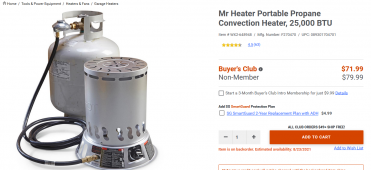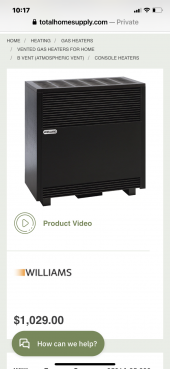Furnace is a heater that is connected to the building. They typically burn fuel to heat air that is blown in ducting around the building.
I am not sure how to equate BTU to KW. BTU is tied to room size.
BTU is not related to room size. It is incorrectly used as a unit of power by american manufactures of heating equipment. it is not. The correct unit and the way it is used is BTU/hr
Here is a calculator:
https://www.rapidtables.com/convert/power/BTU_to_Watt.html A kilowatt is simply 1000 watts. It doesnt matter if it is electricity or heat. A watt is a watt.
If you actually want 30,000btu/hr heat source, then just stop reading now. If you dont actually know what you want then consider the following:
If you plugged in one 1500 watt portable electric heater, would that be enough? Would 2 or 3 of them do the trick, or do you actually need 6 of them? Six 1500 watt heaters is just a hair over the 30,000 btu you are saying you want because 30,000BTU is in-fact just about the 9000 watts or 9kW from above.
If 1 or 2 1500watt heaters is actually all you really need then consider this:
https://propexcanada.com/products/
They make a 2000 watt unit and a 2800 watt unit that would work if you only need one or two 1500 watt heaters. If you needed more power you could of course use multiple propex units as well if you wanted to spent the money. They are thermostatically controlled.
They claim 95% efficiency. I highly doubt this as they would be condensing if they were but they are at least a mid-efficient (85% or so). If you are at all crafty you can get more heat out of it by exposing a bunch of its exhaust tube in the heated space and even more by blowing a fan over it. You would just need to be smart enough to manage the condensation in the tube that results.





